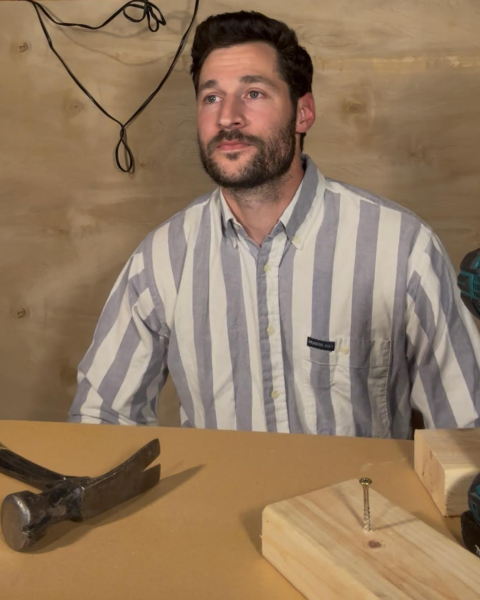Rocketry Cookie Blasts Off
Cookie Launches Successful Rocket
The sky was the limit for a group of students who built and launched a rocket for their two-day Cookies project.
Rocketry was new Cookie this year. Sponsored and led by juniors Matthew Turk, Claire Levin, and Jared Saef, and Upper School physics teacher George Austin, it planned to build a high-power rocket during the two-day Cookies period and launch it later in the month of May.
The students were inspired to create the Cookie by a presentation from Dr. Judy Lubin, an executive coach who oversees the Northwestern rocketry team. With Lubin’s guidance, the students in the Cookie, consisting of three juniors, four freshman, and one senior, assembled a rocket from a kit. The team also ran simulations on the rocket to determine its speed, estimated height, and other factors.
The team utilized a kit because of its ease of use compared to starting from scratch. “We decided – let’s go with a kit. It comes with instructions for first-time builders, so it would be much easier to succeed in building a nice high-powered rocket,” Austin said.
Over the two day Cookies period the team assembled most of the rocket. “Our group spent the time gluing wings, putting pieces together. We did run into a few problems, but in the end it turned out really nice,” Saef said.
After additional work outside of the Cookies time, the six-and-a-half foot tall rocket, named “Flora J-1,” was completed in time for the scheduled launch time, May 18. A group of five from the team, Austin, and upper school lab manager JP Navin, brought the rocket to a launch in Richard Bong State Recreation Area in Kansasville, Wisconsin, sponsored by the Wisconsin Organization of Spacemodeling Hobbyists (WOOSH).
“I felt a great amount of pride in the rocket because it wasn’t until that point that I had seen the endeavor in perspective,” Turk said. “Once you stand back and see the rocket and the intricacies and complexities and the fine detail … I was very surprised that we the team were able to do all that.”
The initial launch was a success, with the rocket reaching a height of over 1,800 feet and landing safely a few hundred feet away. The team obtained data regarding the launch and video footage from an onboard altimeter and camera.
The launching of the rocket was an exciting moment for all at the launch. “There’s this fizzing sound as well. There are these blue-yellow fumes. And then there was a resounding gasp from the people around me. And the rocket just went up in a matter of seconds. I hardly even had time to see it,” Turk said.
After the first launch, the team decided to launch the rocket a second time using a more powerful rocket motor, propelling it at an estimated 460 mph to 6,786 ft in the air, where it then drifted more than four miles away into a swamp. From there, the team spent two hours wading through water to ultimately find the rocket in perfect condition.
Turk says he enjoyed the experience immensely. “The experience of trekking through the reeds and the murky water around that high grass, and finally getting to that rocket … it instilled in me a sense of resilience, and the fact that I had that experience, it provides me with a sense of happiness that is undying,” he said.
Overall, Austin feels that the rocket building and launch was a success, and hopes to launch another high-power rocket again.“If students are interesting in pursuing this further, I would more than support that effort,” he said.






